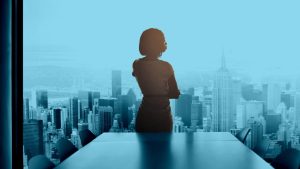 Humans are a hard-headed bunch. We learn through repetition. We learn through repetition. We learn through repetition. It’s no wonder, then, why upper management balks at having to spend resources on training, because most training programs are a one-hit wonder. It’s easy to sympathize with the hesitation to invest more into training when past experience tells you that it is only a matter of time before employees are back in their old ruts. Here at Impact Learning Systems, we feel your pain. We cringe at the thought of hard-earned dollars being spent on training that will yield little long-term benefit. We are firm believers that if you are going to invest in training, then it needs to be reinforced so that you can realize its full benefits. This is why all of our training programs have been developed with your organization’s future success in mind.
Humans are a hard-headed bunch. We learn through repetition. We learn through repetition. We learn through repetition. It’s no wonder, then, why upper management balks at having to spend resources on training, because most training programs are a one-hit wonder. It’s easy to sympathize with the hesitation to invest more into training when past experience tells you that it is only a matter of time before employees are back in their old ruts. Here at Impact Learning Systems, we feel your pain. We cringe at the thought of hard-earned dollars being spent on training that will yield little long-term benefit. We are firm believers that if you are going to invest in training, then it needs to be reinforced so that you can realize its full benefits. This is why all of our training programs have been developed with your organization’s future success in mind.
Getting Training to Stick
For any training program to stick, it needs to be supported from the top down, so that it can flourish from the bottom up. Training needs on-going reinforcement, and managers are best suited to help employees remember and implement new skills that were developed in training. In fact, so influential is managers impact on training, that according to Ventana Research, retention is increased nearly 63 percent when managers reinforce sales training.
When managers are involved in the follow-up to training they can ask pointed questions or highlight instances when employees could have made different decisions based on what was learned in training. To get what was learned in training to stick, it needs to be practiced and then practiced again and again and again until it becomes an automatic reflex. Managers act as coaches, helping guide employees to think, act and behave differently. Like any good team, it is the practice that allows for winning results.
Let’s look at three ways that managers can help reinforce training:
- Tangible reinforcements—Depending on what the focus of the training was, create tangible aids that can be used to quickly summarize some of the key take-aways. These can be in the form of handouts, diagrams, wall charts or pictures.
- Perfect practice—I heard a coach once say to her team, “Practice doesn’t make perfect. PERFECT practice makes perfect.” The same adage applies to post-training practice. Employees need to begin putting into practice their newly developed skills and tools and repeat them over and over until they feel natural. It’s okay to go through an awkward phase where employees are working to implement a new way of doing and having to overcome old patterns. When managers provide feedback and encouragement to their employees as they practice their new skills, the training is likely to have lasting power.
- Actions speak louder than words—If training is to really having lasting effects, managers need to model the behaviors they expect their direct reports to follow. Training programs that are well-designed will have components that teach managers how to model the best practices and give them appropriate tools to provide on-going support to their teams. Managers should be empowered with tools and skills beyond those of the teams they are managing so they can provide true leadership.
Training is a journey, and like most journeys, there are twists and turns. To ensure that you end up at the destination you set out for, you need to plan ahead, check in frequently, and keep following your map. Think of training as the beginning of a continuous journey rather than a pit stop. When the appropriate stakeholders are equally committed to the success of a training program and are part of the journey, it’s likely your entire organization will benefit. When training programs are reinforced through feedback, encouragement, and repetition your investment will yield the types of returns that will continue to throw off dividends for years to come.
(242)









